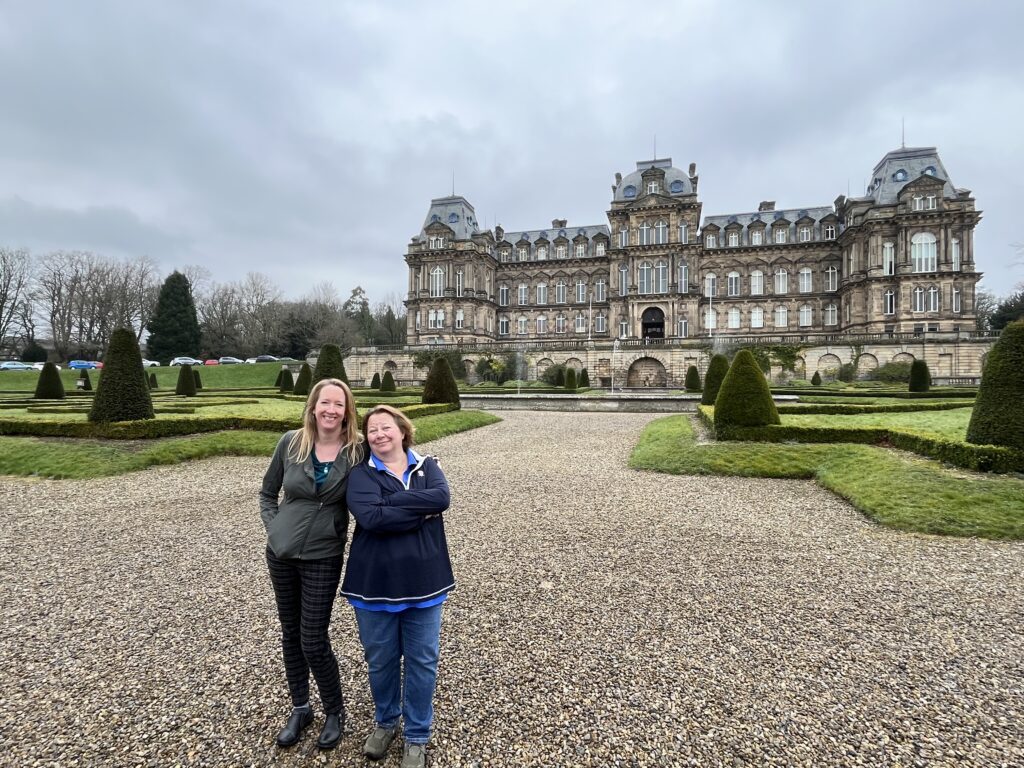
Our friend and colleague, Jess, came for a quick visit during RIT’s Spring Break. One of the places that she wanted to visit was The Bowes Museum, so off we went!
The museum is a purpose built marvel that houses the 15,000 artifacts collected by John Bowes and Joséphine Benoîte Coffin-Chevallier. Both patrons of the arts, the couple traveled and picked out items that they liked – there doesn’t appear to be a theme, but the furniture, paintings, rugs, jewelry, etc. were collected over a 15 year span, offering a unique glimpse into the minds of the couple and is a capsule of a limited time covering a variety of types of art.
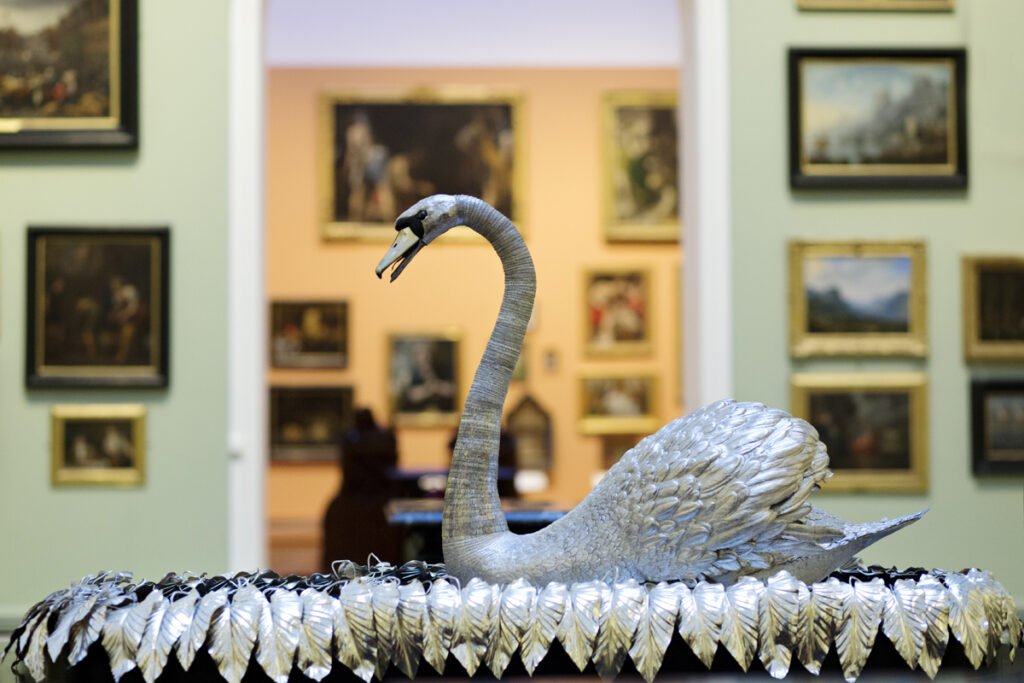
Of all the artifacts in the collection, The Silver Swan (pictured above, image from the Bowes Museum) is probably the best known. It is an automata designed by John Joseph Merlin and first appeared in 1774 in the Mechanical Museum of James Cox, a London jeweler.
To work the swan, you wind it like a clock and then the magic happens! Music plays and the swan moves its head left to right and then preens itself. After picking at the silver feathers, the swan notices silver fish swimming below. The swan reaches down and plucks a fish out of the lake (a series of rotating glass rods that are etched to give the effect of wind over water) and “swallows” it. The music ends and the swan is full.
The swan was not on display during COVID and the mechanism seized. Today it is undergoing restoration and lucky for us, we showed up when the conservators had it out of its display case!
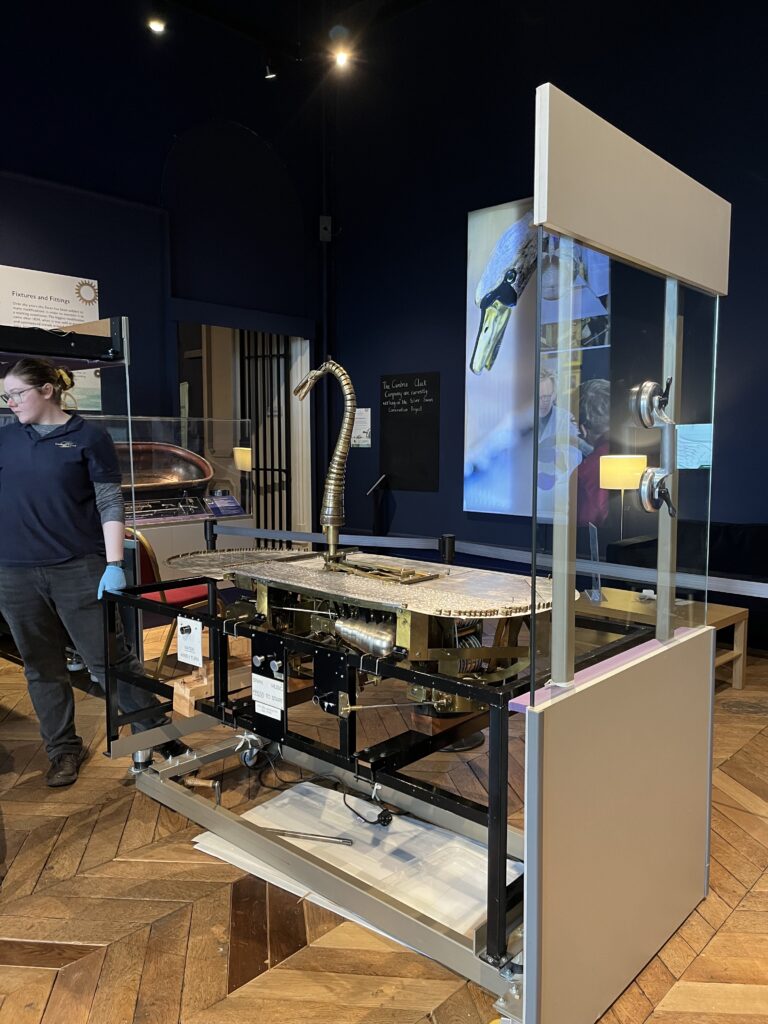
Deb has studied the history of magic, technology, and automata, but had never seen one up close and with the mechanism exposed! A kid in a candy store! The conservators were very nice and answered our questions – it was an incredible experience!
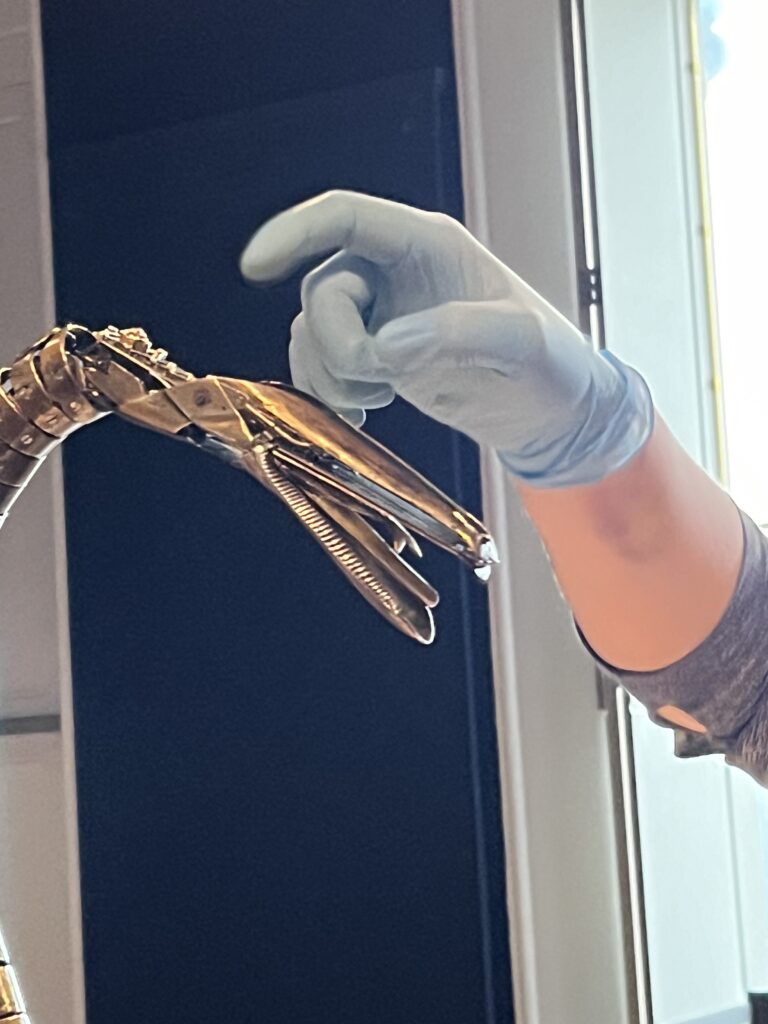
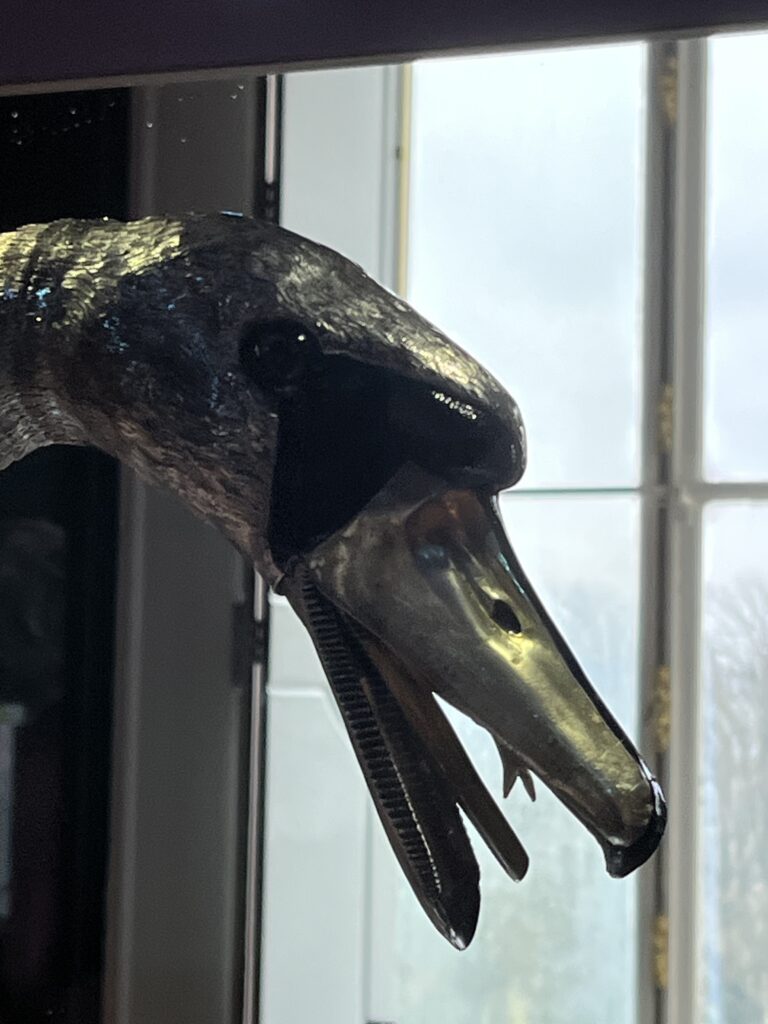
The operating mechanism is normally hidden. For the restoration they need to get at the gears.
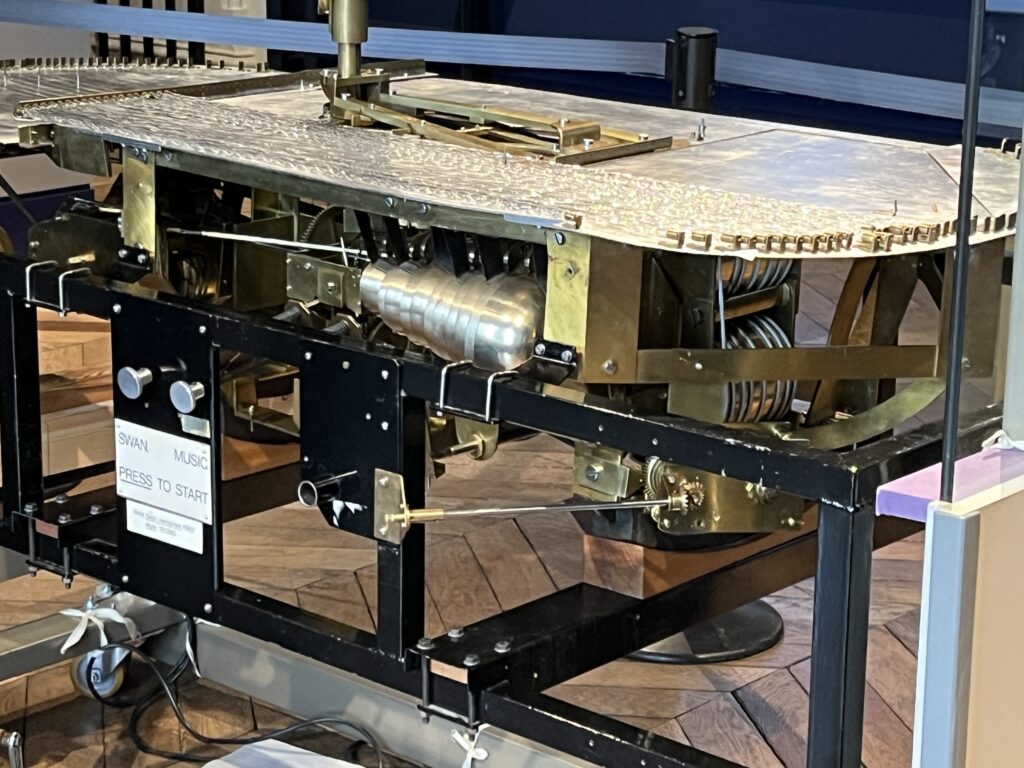
The body before reattachment

Carefully replacing the water – glass rods, etched and numbered!
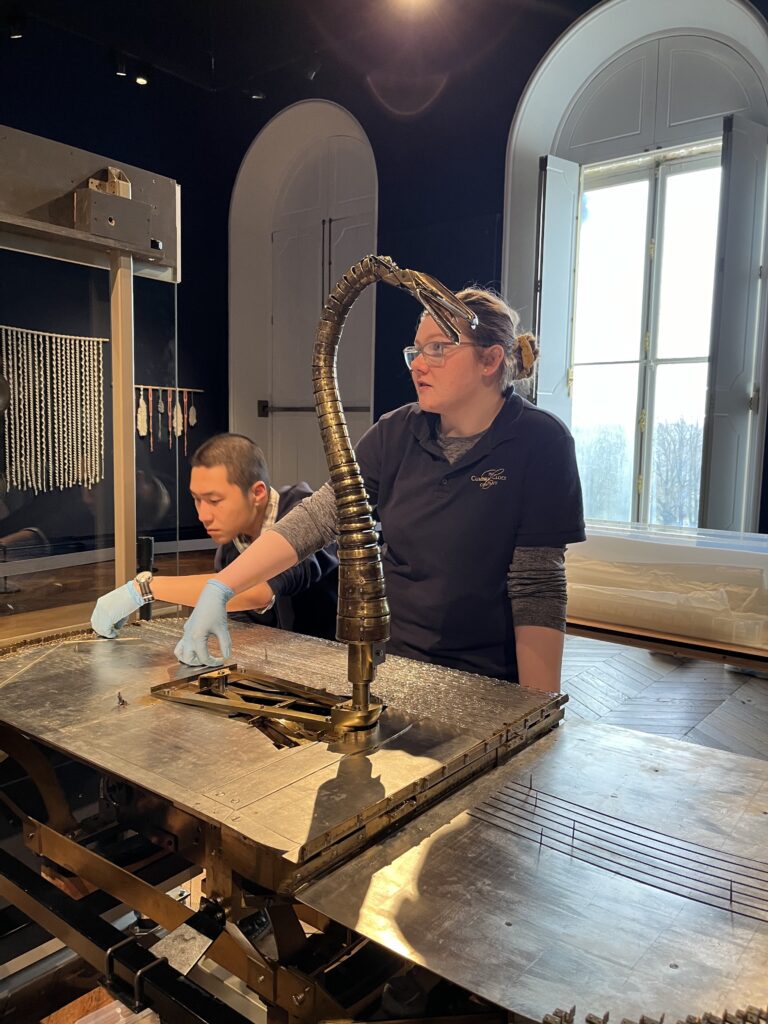
And, every day at 2pm, it puts on a show! What a sight!
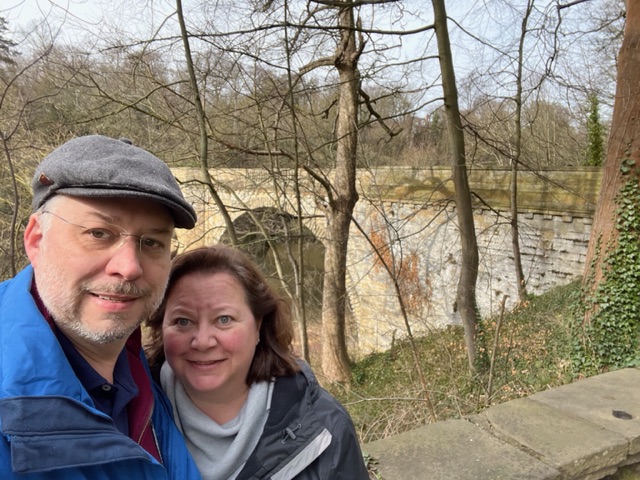
Unbelievable and yet so delicate…..thanks for sharing. Love mom
It was really amazing. Very graceful.